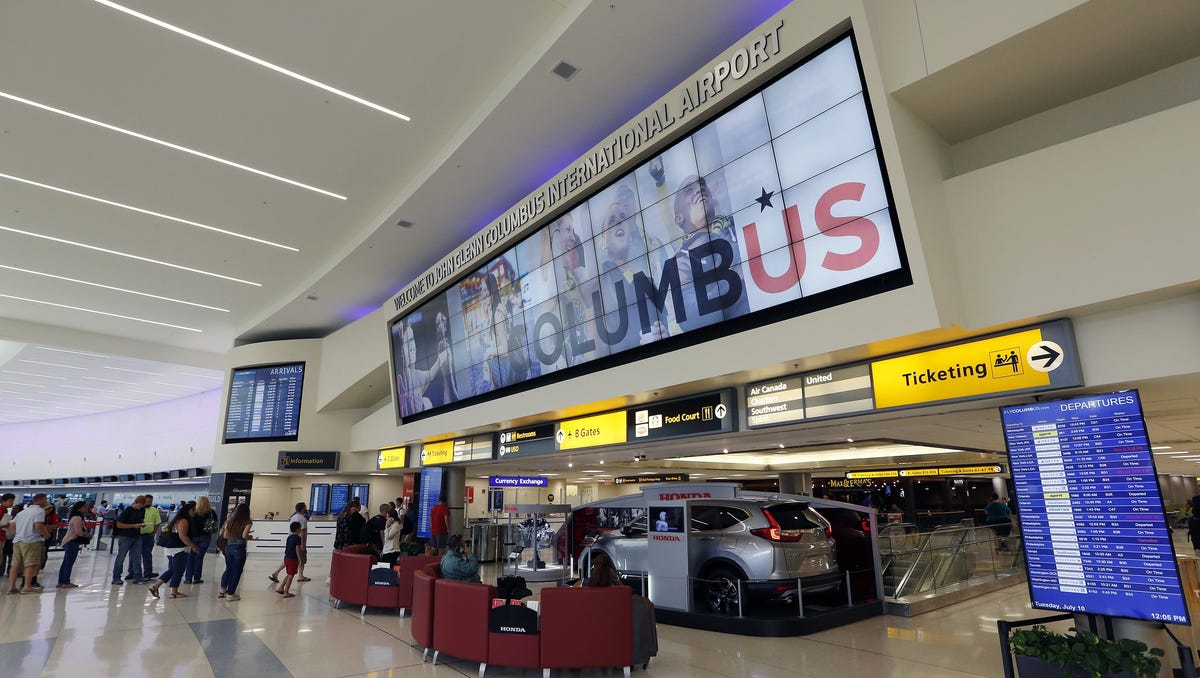LOS ANGELES — After four long years, the coveted international visitor appears to finally be returning to the U.S. in real numbers.
That rebound was heralded by many destination marketers during U.S. Travel Association’s annual IPW conference here. But the good news was tempered by what travel pros said was a fragmented recovery, with some areas benefitting more than others.
International travel to the U.S. overall is expected to reach 98% of 2019 levels this year, up from 84% in 2023. A full recovery is expected next year. Some states are achieving early success. Visit Florida is among the DMOs saying that it expects international visitation to surpass prepandemic levels this year.
Overseas arrivals to the Sunshine State in March were up 1.7% over March 2019, the first time the state has passed 2019 numbers. Visit Florida CEO Dana Young said that “if they keep coming” that market will recover this year.
Markets fueling the recovery, Young said, are Germany, up 28% over 2019 in March, and the U.K., up 12%.
It’s a trend echoed by Universal Orlando Resort.
“We’re super excited, because we really are experiencing tremendous international recovery,” Heather Brown, Universal Orlando’s senior vice president of destination marketing and sales, said during IPW, pointing specifically to a return from major markets like the U.K. and Brazil. “There’s been pent-up demand and a lot of competition. But we’re very pleased with the recovery.”
New York expects total visitation to reach 97% of 2019 levels this year, with international visitors tracking slightly higher and expected to be at 98% of prepandemic levels, said Fred Dixon, CEO of NYC Tourism + Conventions.
“And if the current projections hold, which we expect them to do, we’ll be significantly above 2019 next year in every category except for business travel,” he said.
Dixon called the international visitor sector “critical” to New York, representing 20% of visitor levels but 50% of spending and hotel room nights. “It takes four domestic visitors to equal the economic impact of just one international traveler,” he said.
‘Not enough are doing great’
Different destinations are having degrees of success with different markets, said Geoff Freeman, CEO of U.S. Travel.
Some markets are exceeding 2019 levels, he said, while other markets are below, specifically, those that depend on Asia, from Seattle to San Diego.
“Talk to anybody on the West Coast — what’s going on with China, Japan — and they’ll tell you they are below,” Freeman said. “Obviously, relative to where we were in 2019 we’ve fallen behind the trendline considerably, and we’ve got a lot of work to do. It’s great to hear some markets are doing well, but not enough markets are doing great.”
Freeman said the continued excessive wait times for visas in some countries has also affected some destinations more than others. For example, those that depend on Colombia are feeling that pinch.
On the flip side, in India, where Freeman said there were “enormous” wait times for visas over the past few years, those waits have come down to 150 to 200 days. “It’s the only market we’re seeing nationally with greater visitors today than prepandemic,” he said. “You can only attribute that to one thing: enormous demand that could overcome those visa hurdles.
“But that’s not sustainable long term, to put every obstacle in front of travelers possible and they still come.”
India and Canada are the only two Top 10 inbound markets that have fully recovered and reached or surpassed their prepandemic levels in 2023, data from the National Travel and Tourism Office shows. The rest of the list is expected to recover and surpass 2019 next year — with the exception of Japan and China.
Los Angeles and China
Los Angeles is one of the markets seeing exactly the kind of uneven recovery Freeman alluded to. The city saw 7.4 million international visitors in 2019 and 5.8 million in 2023, with the lag mostly from its Asia-Pacific markets.
“It’s going to be a staggered recovery. Right now we’re trying to be very, very agile in our deployment strategy,” said Adam Burke, the CEO of the Los Angeles Tourism & Convention Board. He said the organization still maintains all seven of its international offices but is focusing on visa waiver markets where air service has returned to prepandemic levels.
That is because in 2019, of the roughly 3.3 million Chinese visitors to the U.S., Los Angeles got 1.2 million of them. Last year, the city saw 400,000 Chinese visitors.
Those numbers are not expected to fully recover for several years.
“That still makes it one of our top overseas markets, but that also means we’re looking to backfill 800,000 visitors,” he said. “So the markets where we’re really focused are U.K., Ireland, Australia/New Zealand, South Korea, France, Japan and Germany, because in each of those markets, air service is fully recovered.”
Having that air and visa waiver status makes a difference. For example, the U.K. has almost recovered to prepandemic levels for L.A., Burke said, from 380,000 visitors in 2019 to 310,000 last year.
Despite the shortfall, Burke said he is still bullish on China. He cited several travel-trade delegations going to China over the next month and agreements being forged between L.A. Tourism and Visit California with the Chinese travel trade.
“While it’s still going to take longer to recover, we’re still pretty optimistic about what China looks like as a long-term market,” he said.









